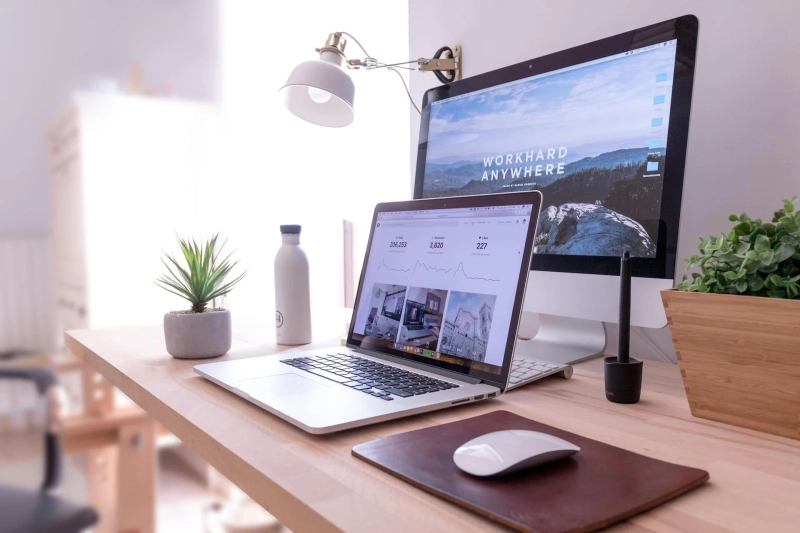Customer retention depends on more than pricing or product quality—it’s shaped by how consistently users can interact with a brand. From layout to navigation to how quickly a page loads, web design directly impacts the decision to return. Well-structured design improves customer retention for digital businesses by removing frustration, simplifying tasks, and reinforcing trust across devices. Visitors stay loyal to platforms that feel easy, familiar, and responsive every time they return.
1. Organized layouts help returning users stay on track
Users often return with specific actions in mind—tracking orders, continuing a task, or revisiting saved content. A structured layout supports those goals by reducing friction. A publishing platform redesigned its dashboard to feature quick links to recent items, favorite tools, and support—all visible within the first scroll—and saw increased session length among frequent users.
- Fixed menu positions help visitors find repeated actions quickly.
- Grouped sections reduce the need to relearn structure on each visit.
- Highlighted “last seen” content improves engagement for logged-in users.
2. Faster load speeds keep users from dropping off
Load times shape first impressions. Sites that lag or freeze lose visitors, even if their offerings are strong. An online apparel store shaved three seconds from its load time by deferring scripts, compressing images, and preloading key content—return visits increased and checkout completion rates improved.
- A delay of over 3 seconds leads to bounce rates exceeding 30% (Source: Google).
- Optimized load speed enhances brand credibility and keeps attention.
- Performance improvements lower exit rates for both new and returning users.
3. Visual consistency across devices builds brand memory
Recognizable design creates a sense of trust. When users see the same layout logic, typography, and branding from desktop to mobile and across emails, it reinforces their connection with the brand. A recipe platform unified its fonts, button shapes, and page templates across all platforms, leading to higher re-engagement metrics among subscribers.
- Shared design language reduces user hesitation across sessions.
- Cross-platform consistency helps reinforce emotional familiarity.
- Familiar visuals create mental bookmarks that aid navigation.
4. Clear Calls-To-Action improve returning user guidance
Returning users want direction, not guesswork. CTAs should be strategically placed, consistently styled, and easy to understand. A learning platform rearranged its key action buttons—like “Resume Lesson” and “Continue Module”—into high-contrast areas and increased repeat course access by more than 25%.
- Placement of core actions influences habit formation.
- Clear, benefit-driven microcopy increases click rates.
- Repetition of key CTAs across page types helps maintain orientation.

5. Responsive design supports consistent cross-device loyalty
Many users return on mobile while commuting, waiting, or multitasking. A fully responsive design ensures that layout, speed, and interaction quality remain steady regardless of screen size. A pet supply service updated its mobile UX with simplified menus, gesture-friendly navigation, and streamlined checkout—and observed stronger mobile retention within weeks.
- Over 65% of returning users browse via smartphones (Source: Statista).
- Mobile-optimized design supports quick interactions and task completion.
- Adjusted font sizes and content stacking improve readability and control.
6. Emotionally aligned design encourages habitual return
Color schemes, interface tone, and subtle animations affect mood more than most realize. Returning users appreciate designs that feel intuitive and emotionally consistent. A mental wellness app introduced color-coded modules, friendly transitions, and gentle language—users reported feeling more supported and logged in more often.
- Friendly interface behavior fosters emotional trust.
- Thoughtful design tone increases perceived value beyond content.
- Visual rhythm through layout and animation helps retain attention over time.
7. Transparent interfaces increase confidence and return rates
Clarity around actions, outcomes, and account data helps users feel in control. Sites that use plain language, clean form layouts, and visible trust markers reduce friction during sensitive steps like checkout or profile management. A subscription billing tool clarified each stage of its cancellation flow and displayed transparent benefit reminders—repeat usage rose as users felt less manipulated.
- Trustworthy design increases the likelihood of long-term retention.
- Straightforward forms reduce confusion and hesitation.
- Consistent UI logic across sensitive flows strengthens confidence.
Key takeaways on how web design supports long-term customer retention
Every design decision—from font size to menu placement—impacts how people experience a brand. Good design helps visitors move through content effortlessly, stay focused, and feel confident in their next steps. When a website loads quickly, looks familiar, behaves predictably, and offers thoughtful feedback, users are more inclined to return without hesitation. Strong retention is the result of not just what a site offers, but how clearly and comfortably it delivers it.
- Structured layout improves returning user efficiency and comfort.
- Fast page load reinforces trust and reduces exit risk.
- Visual consistency strengthens user memory and brand recall.
- Clear CTAs encourage repeat action without confusion.
- Responsive and emotionally aware design builds deeper loyalty.
Frequently Asked Questions About Web Design and Customer Retention
What’s one early sign a website design may be harming retention?
If users regularly exit before completing familiar actions—like logging in, continuing a purchase, or revisiting content—there’s likely friction in the layout or structure.
How often should brands evaluate their site design for retention issues?
Quarterly reviews are ideal, especially after traffic or conversion drops. Frequent testing uncovers small design flaws before they affect loyalty.
Do users consciously notice visual consistency?
Not always—but they feel it. Familiar branding and structure make returning to a site feel safe, especially across multiple devices.
What emotional elements matter most in web design for loyalty?
Tone of voice, color, and micro-interactions—like progress feedback or hover effects—make people feel cared for and understood.
Can mobile design alone affect whether a user comes back?
Yes. Many users will abandon a brand entirely if mobile usability feels frustrating, no matter how strong the offering is elsewhere.


